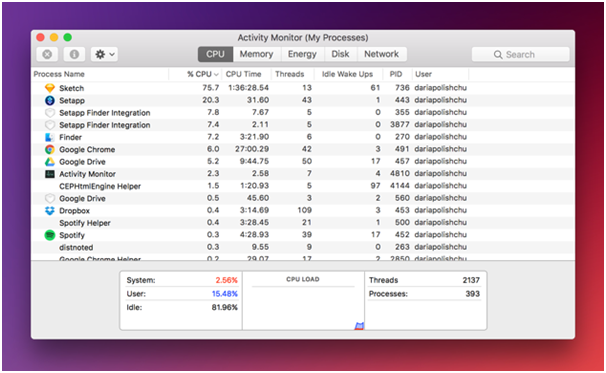Working on a sluggish Macbook can become a real pain, especially when you have a deadline looming in front of you. Some people cannot deal with a slow computer anymore and give in to purchase a new model.
While spending money is an option, not everyone can simply take that step. On the other hand, there are ways that you improve the performance of your Macbook. And this step-by-step guide should be a good way to start, especially if you have not had an opportunity to do something similar before.
Table of Contents
Step #1 – Clean Dust and Dirt
Old computers have accumulated a lot of dust and dirt inside. And those who fail to clean them up regularly are bound to experience performance issues.
Cleaning filth inside a Macbook is harder since you cannot open it up as easily as a personal computer. There is a risk involved. Meaning that it would be better to take the laptop to someone who is a professional.
Removing dust and dirt will boost performance. It will also reduce the workload of internal fans and lower the temperature. Overheating is another problem that causes damage to the internal hardware. If you want to take things a bit further, buy a cooling pad for the Macbook.
Step #2 – Look at Activity Monitor

Image source: MacPaw.com
Activity Monitor is a useful tool that allows you to sort applications by memory and CPU usage. Sort the list and see which of the apps are at the top.
When it comes to mac memory usage, you cannot free up a lot because so many processes are integral to the system and cannot be removed or replaced.
Nevertheless, it does not mean that all is lost. For instance, there are bound to be programs running in the background while not offering anything of value. Shutting such apps off is the first thing you can do.
Another example could be an internet browser. Some like to install various extensions, like ad-blocks, and fail to realize how much memory it consumes. Multiple open tabs also do not help.
Yes, there are times when it is inevitable to use multiple browser tabs or certain extensions, but you can still be more conservative with how many resources a browser or another app consumes.
Step #3 – Free up Disk Space
Lack of disk space also prevents you from having an optimal Macbook. Plenty of users fail to fit every file on the laptop. There are some ways around the problem, such as:
- Running a cleanup software to remove junk files like old backups and caches.
- Transferring files to iCloud or Dropbox.
- Using external storage devices.
- Subscribing to streaming services and eliminating the need to keep large media files like movies or TV shows around.
Step #4 – Scan for Malware

Image source: Pexels.com
Malware, viruses, and even more aggressive cybersecurity threats can end up on your Macbook without you realizing it. It is imperative to have a reliable anti-malware tool that constantly scans the system and removes any potential threats the moment you encounter them.
It is a good practice to avoid shady websites and clicking on unknown files actively. But for real peace of mind, nothing beats good anti-virus software.
Step #5 – Trim Startup Application List
Regular restarts, like a few times every day, does help a lot. They prevent memory leaks and give computers a fresh start. Of course, if you are using it longer than usual, restarting more frequently is recommended. And it is better to switch the Macbook off when you are not using it as it will prolong battery life as well.
You may not be so keen on regular restarts because it takes a long time for the computer to load due to all the applications in the startup menu. It would be better to trim that list down in the settings. After all, you can always launch the app when you actually need to use it.
Step #6 – Turn off Visual Effects

Image source: Burst.Shopify.com
Visual effects offer nothing of value, and pragmatic people should not hesitate on whether these effects should be present or not.
Start by going to the Dock and unticking the boxes from both “Animate opening applications” as well as “Automatically hide and show the Dock.” You can also untick the settings and turn off Mail application effects as well as Launchpad effects.
Step #7 – Declutter Desktop
Littering a desktop with every file you use is never a good thing. It would be much better to have no icons on the desktop at all since every icon has to be rendered when you switch between the desktop and another window. Thus, keeping your files in another location would be much more efficient and beneficial to your laptop.

